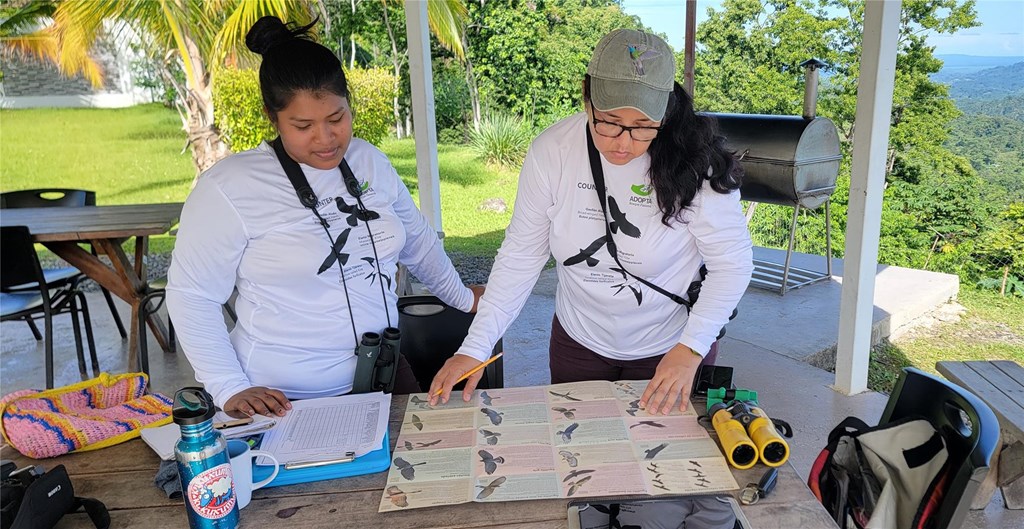Raptor Conservation and Monitoring along the Western Hemispheric Flyway
The world’s most biodiverse region for birds, Central and northern South
America and the Caribbean witness the largest and most concentrated flights of migratory raptors on the planet. Join us in creating a collaborative grassroots network along this vital corridor that will conserve birds of prey, local to global.

Thanks to expertise from former trainee graduate Julio Gallardo and Hawk Mountain staff, along with editorial help from Ernesto Ruelas and Esther Vallejos, Hawk Mountain published and distributed a flight guide for raptors of Central and South America in both Spanish and English. This pocket-sized guide is designed for the general public and includes the basics of migration, threats to raptors, key places to view raptors, and a condensed species identification section for the most common raptor migrants. The piece is modeled after the same successful pocket guide that has been used for many years by visitors and staff at Hawk Mountain.
Why Raptors Matter
The migratory raptors that we see around the world play an important role in the delicate balance of predator-prey populations. Without raptors, many rodent species would increase, damage crops, and spread disease. Other species, such as the laughing falcon and the white hawk, feed on venomous snakes, including rattlesnakes, coral, and fer-de-lance reducing venomous bites to people and livestock. Other species help to control agricultural pests, such as mice, grasshoppers, and locusts.
Birds of prey are important for many cultures and were trained to hunt, considered gods and symbols of war and royalty, were carved in precious stones, forged in gold by ancient cultures, and remain present on our coins, flags, and in some traditional festivities. The Totonacs people of eastern Mexico have kept the traditional dance of Los Voladores or “The ones who fly” for hundreds of years. This dance was inspired by the migration of raptors during spring, which announced the beginning of planting season.
How You Can Protect Raptors
Many raptor populations are in decline. Threats include habitat loss, climate change, pesticide use, and direct human persecution, like hunting and shooting. Learning about raptors, telling others, protecting natural habitats, and appreciating the world-renown migration that occurs in Central America is an important step toward changing human attitudes toward birds of prey.
You can help protect raptors by leaving natural trees and shrubs on your property for raptors to hunt or roost and reducing the use of pesticides and chemicals on your property, especially on farms and grasslands. You can also tell others about the migration that occurs overhead each year, take a friend or family member to a hawk watching site, discourage shooting, and share what you know about raptors and why you appreciate them.